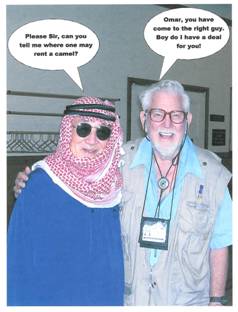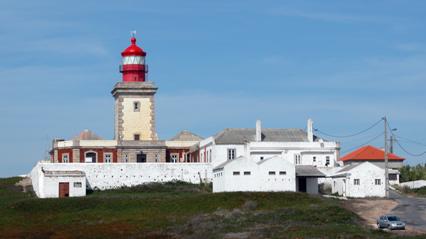My name is Stanley Mataichi Sagara. My Christian name was given to me by my first grade teacher who was probably from the Midwest and had never had an experience with Orientals. Apparently my Japanese name was too hard to remember for roll call so all the Japanese children in my class were given Christian names which we carried through out our lives.
Having been born in August I have just turned 81. I have visited 66 countries, however some of these countries are no longer separate, such as Macau or Hong Kong. Likewise Taiwan may revert back to China in the near future.
Some of my foreign travels were while I was on military duty and some were when I was on eye care missions with Volunteer Optometric Services to Humanity (VOSH), and the balance were when I took tours to these countries. Several trips have been repeats. I still consider Japan as my favourite country, the birthplace of my father and mother. I still have a number of third cousins in Japan as I have second cousins in Brazil. My second choice would be Austria, where I was when WWII ended.
I was in D Company, 506th Pcht Rgt, 10lst Airborne Division. When the war ended eight Japanese-American paratroopers were transferred to the 82nd AB Division because the l0lst was scheduled to go to the Pacific Theater to help defeat Japan. Due to our race we were assigned to Europe, hover about 6000 Japanese American GIs were assigned to various units in the Pacific War as Interpreters-Translators. Each was assigned two big Caucasian GIs as body guards who accompanied them everywhere (even to the latrine) so they would not be mistaken for an infiltrated Japanese soldier.
I would very much like to visit Scandinavia, I have only been to Denmark so far. I have been to Copenhagen and Helsinki on several occasions but only in transit.
My special travel equipment is a nylon bath cloth made in Japan. It is helpful to remove dead skin and helpful to scrub my back. ($6.00). In my travels I try to keep my carry on suitcase under 28 pounds which I send as checked baggage. In addition I carry a shoulder bag which can be converted to a small back pack where I carry my shaving kit and other items that I need at my first hotel, in case my checked bag goes astray. In this way I do not need to access my checked bag for three days if necessary. I actually weigh my packed bag and may remove some items if the bag is too heavy. I try not to take any item again if I did not use it on my trip, except clothing to suit the difference in expected weather conditions. I also live out of my packed suitcase for a week prior to leaving for the trip so that I do not forget some important item or if I think I can do without an item, it is left at home. If you cant carry your own bag, its too heavy, Better repack! I do not take whole tour books, only those pages that are pertinent. I like maps and take good ones which are helpful to help write my travel journals. A small compass is very helpful, especially at night or in such places as subways.
The longest travel trip I have taken was for 38 days, which is about the most I want to take. They say “When you start to look like your picture in your passport, its time to go home! Australia had many surprises for me. I knew it was a big country and that we would only see a portions of it but a lot of country is a desert. I did get cleaned out of my essential possessions while in Oaxaca, Mexico. As it usually is, I have to blame myself. I kept everything in my shoulder bag which I set down on the floor while I paid for my parking fee at a public garage. Less than a minute was all it took. No one saw anything, so they told me.
I have trapped pickpocket’s hands in my pockets, once in Sao Paulo, Brazil and again in San Miguel de Allende, GTO, Mexico. I learned that its better to chalk it up to experience rather than involve the police. They can tie you up for hours taking statements, by someone who is not fluent in English and they may want the money or article involved as evidence, which you will probably never see again since you will be moving on in a day or so.
While visiting in Korea I purchased several bargain priced sneakers which were irregulars or factory over runs. They were about two or three dollars a pair. I gave the salesman a US ten dollar bill and waited for my change. He asked me how I was fixed for sport socks and placed a bundle (probably 10 pairs) on the counter. I said I’m OK and still waited for my change. He puts another bundle of sport socks on the counter, still no change. I hesitate, he places a third bundle on the counter. I think he is not going to let that US ten get away from him. It became amusing to me the way it was turning our, when I should have been angry at the salesman. I finally took the several bundle of sports socks, the salesman kept my US ten and I have still a good supply of Korean sport socks (one size fits all).
As an American of Japanese decent we were not permitted to enter the US military service. In fact the ones who were in the service were given early discharges, except the few that fell through the cracks.
Later when the all Japanese-American Regimental Combat Team was formed we were permitted to volunteer to join. I was attending college at the time and was later drafted at Ft Leavenworth, KS. I was given the Japanese language test (we all took the test) but I did not pass so I went to Infantry basic training in CampShelby, Hattiesburg, Mississippi. On my first pass to Hattiesburg I got off the bus and had to use the restroom. I only saw signs for BLACKS ONLY and WHITES ONLY but nothing in between. My first experience in the segregated south. I used the toilet in the local USO which had no colour bar.
Upon finishing basic training I volunteered for the Paratroopers, mainly because I could double my pay (Jump Pay was $50.00) My parents and younger siblings were in a government operated concentration camp near Cody, Wyoming with any income so I was sending them part of my pay check each month. They could purchase some items in the camp canteen or order from the catalogue sales or ask their friends to do the shopping for them outside the camp.
After the war I transferred over to the newly formed US Air force and completed my 20 years of military service. I joined the Lions Club soon after I retired and one of the projects we had was collecting donated eye glasses. No one could tell me what happened to the eye glasses after we collected them.
I later discovered that the Volunteer Optometric Services to Humanity (VOSH) a group of eye doctors and lay personnel actually go on eye care missions to third world countries to examine patients and give out recycled eye glasses, at no cost. I have been on some 16 eye care missions to some very interesting places, such as India, Thailand, Ecuador, Peru, Paraguay, Bulgaria, Ukraine, Russia, Guatemala, Honduras, Mexico and many other countries.
I must point out that we do pay our own way but sometimes we get reduced air fare or our sponsoring organization may take care of food and lodging. On each trip we have the option of taking a side trip to visit some interesting places.

I also joined Friendship Force International, an organization started by Pres Jimmy Carter. There are clubs all over the world. We visit other club members as a group and they in turn visit other clubs around the world by mutual agreement. Usually a week of hosted family visits. I went with the club to Russia for three weeks and on another trip I went to Freiberg, Germany in the Black Forest and to Oltzysn, Poland where we met some very nice people who really like Americans.
Apparently I do not have a face that people think of as typical American. Although I tell them I’m from America they still question my origin so to make it uncomplicated I just tell them “Mongolia” which satisfies their curiosity. There is more to this story, but this will have to do for now. Maybe later I’ll think up some more things about my travels. Stanley Mataichi Sagara (the Mongolian).
Footnote by Mac: The ‘Arab’ in the picture is Stanley Sagara. He brought the Arab outfit in Tangiers and it is genuine although I think it is Palestine rather than Moroccan garb Another friend William “Mike” Westfall took the picture and put in the caption. It was taken at our small AFRH-W Halloween Party. We do not dress like that every day (I do but not the others!)
If you would like to contact Stanley, he is happy to answer e-mails on: smsagara2@aol.com


 We are sorry to say that Mac is not very well, but he is
still e-mailing strong and recently sent the Beetle a
collection of Mac reminiscences including those about a
hotel room with a vibrating bed and an Indian astrologer.
We are sorry to say that Mac is not very well, but he is
still e-mailing strong and recently sent the Beetle a
collection of Mac reminiscences including those about a
hotel room with a vibrating bed and an Indian astrologer.